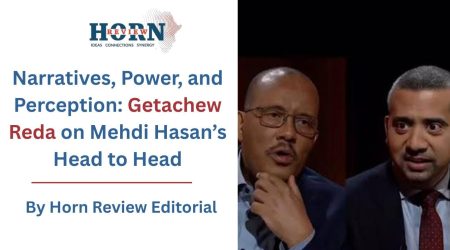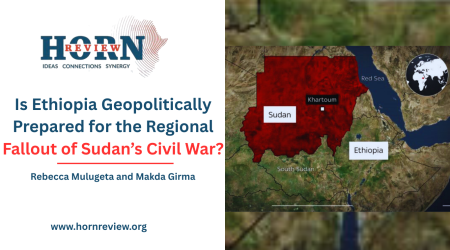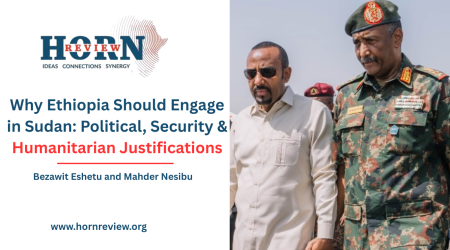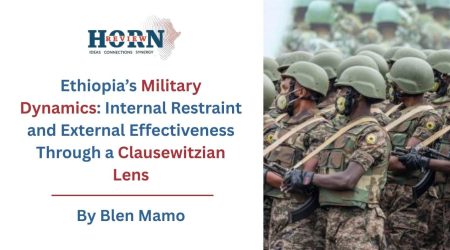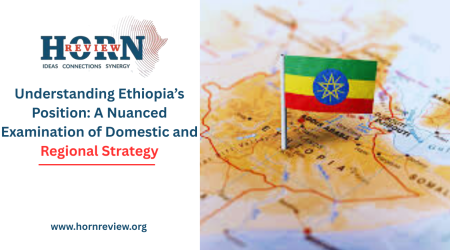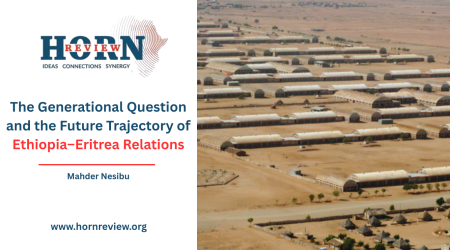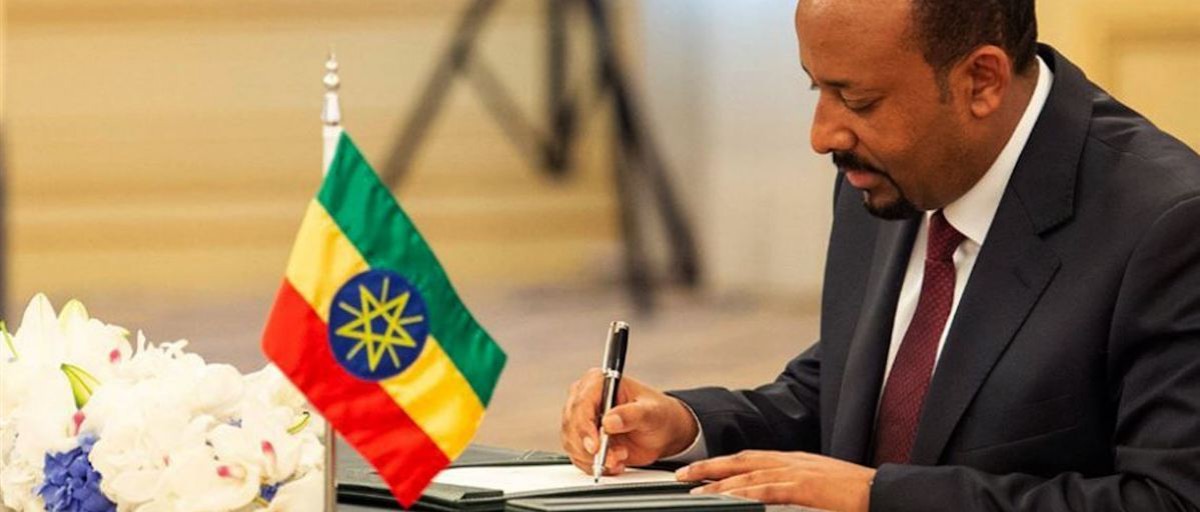
30
Jul
Ethiopia’s Reform: Hope and Hazard in a Transitological Lens
Ethiopian intellectuals increasingly describe the current political environment as on in a transition, in the sense of transitology, which is a complex, open-ended process that begins with the dismantling of an authoritarian regime and ideally ends in some form of democracy. In this view, Ethiopia’s change cannot be reduced to a sudden and violent “revolution” or a short-term bargain; it is understood as a long-term, non-linear evolution with high expectations and deep uncertainty. Dr. Abdi Zenebe of the Institute for Foreign Affairs has been especially vocal about this perspective. He argues that Ethiopia’s 2018–present era should be seen as a reformist transition managed from within, rather than as a revolutionary rupture. Unlike past regime shifts like the monarchy-to-Derg and Derg-to-EPRDF revolutions, which were violent and often left new orders fragile, today’s changes are being carefully steered by incumbent actors to avoid repeating historical failures.
In Abdi’s schema, the country must move from a politics of regime-centred security and rule by force toward one of human security, genuine rule of law and ultimately consolidated democracy. This implies a sequence of liberalization, democratization and then institutional consolidation, all anchored in nation-building and policy reform. Crucially, Abdi cautions, unless reforms build resilient institutions and a shared national purpose, Ethiopia risks “reset syndrome”, in which each new leader undoing the prior agenda and driving a return toward authoritarianism.
This framework helps explain both the promise and peril of Ethiopia’s current era. The roots of change lay in decades of authoritarian rule under the EPRDF (Ethiopian People’s Revolutionary Democratic Front). The EPRDF introduced ethnic federalism after 1991, on paper giving each “nationality” a voice. In reality, however, the dominant Tigrayan People’s Liberation Front (TPLF) exercised tight control over the government and security forces. The then new federal setup did much to relieve old tensions, but it also deepened ethnic fault lines by making identity the primary basis of politics. Widespread grievances grew as most decisions continued to be made in Addis Ababa by a closed party hierarchy. By the mid-2010s, massive protests erupted demanding political space, fairer land policy and an end to abuses. The authorities first cracked down, but eventually the ruling coalition admitted defeat. In early 2018 Hailemariam Desalegn, the TPLF backed prime minister, resigned under pressure, and after weeks of suspense the EPRDF appointed the young technocrat Abiy Ahmed to lead the government.
The rise of Abiy reflected a realignment within the ruling coalition. Ethiopia’s Oromo Peoples’ Democratic Organization (OPDO) and Amhara National Democratic Movement (ANDM), once puppet branches of the TPLF-dominated EPRDF, suddenly embraced the protest movement. From 2016 onward these parties reshuffled their leadership and positioned themselves as agents of change. Working together, the OPDO and ANDM effectively broke the TPLF’s grip on the coalition. Abiy’s accession in April 2018 emerged as the culmination of an internally managed power shift, which involved a peaceful reconfiguration of the party-state, rather than an overthrow by arms or popular insurgency. Ethiopians saw an antithesis of the EPRDF in Abiy, himself however part of that same system, because a proper opposition had long been suppressed. The country’s dominant elites made a strategic pact among themselves, favouring a national reform project over terminal intra-party conflict. This was a break from Ethiopia’s revolutionary past, as Abdi emphasizes: previous transitions “were revolutionary in nature and, in many ways, created more problems than they solved”. By contrast, the 2018 transition was to be a reform, negotiated with “its means as important as its ends,” and guided by a broad notion of Ethiopian unity rather than external templates.
Abiy’s first months in office brought a remarkable burst of liberalization and reform. He ordered the release of thousands of political prisoners and exiles, unbanned opposition parties and independent unions, and greenlit a huge expansion of the media. A National Endowment for Democracy study noted that “the Abiy government freed journalists from prison; deregulated the sector, enabling the establishment of dozens of new media houses”. Abiy also touted an economic shift by opening formerly closed sectors such as energy, telecommunications and airlines to private investment. In June 2018, for example, his government announced plans to allow private participation in state monopolies, cautiously repositioning Ethiopia from a central-planned to a more market-friendly model. These moves met with enthusiasm abroad and at home; Ethiopia was long one of the world’s fastest-growing economies, but foreign-exchange shortages had become acute, and many welcomed fresh capital flows.
Equally dramatic was Abiy’s foreign policy. Within months he flew to Eritrea to formally end the “no peace, no war” standoff dating back to the 1998–2000 border war. The July 2018 peace accord with Asmara was hailed as historic, so much so that the Nobel committee awarded Abiy the Peace Prize in 2019, citing both the Eritrea deal and his domestic reforms. The Nobel citation explicitly mentioned “the release of tens of thousands of prisoners and the return of once-banned opposition groups”. This peace agreement symbolized a break with Ethiopia’s authoritarian past; for the first time in decades a prime minister gave real diplomatic priority to regional neighbours rather than to superpower alliance-building. Abiy himself took to calling this emphasis the “Horn of Africa first” doctrine, signalling that Ethiopia would now invest in subregional cooperation. In retrospect, early 2019 looked like a rare moment when Ethiopia’s transformation felt driven by its own political momentum. Fellow states, development agencies and foreign investors, all sensing a new optimism, promised to help bolster the reform project.
Yet by mid-2019 and beyond the perils of transition became starkly visible. Ethiopia is not alone in this history. The past decade has seen other populist overthrow-of-autocrats struggles go awry. Dr Abdi himself groups the Arab Spring and its aftermath as part of a broader “decade of transformation” during which hopes of rapid liberalization have often been dashed. Sudan’s 2019 uprising initially led to a power-sharing accord between the army and civilian forces, but by October 2021 the generals had staged a coup and effectively ended the journey to democracy. The transitional government collapsed amid renewed factional fighting in Darfur and elsewhere, and Sudan plunged back into civil war. Egypt in 2011–13 followed a similar arc when mass protests achieved a democratic election, only to see the military oust the elected government in 2013 and replace it with an even harsher regime under Abdel Fattah al-Sisi. In both cases, powerful “interest groups” proved willing to reverse virtually all gains when it suited them. Such instances exemplify how, without institutional safeguards present in reform periods, dominant armies or party machines will bend the transition back toward authoritarian continuity.
Ethiopia’s reforms quickly ran up against its own vulnerabilities. The biggest disruption was the Northern War. In November 2020, conflict ignited between federal forces and the TPLF leadership in Tigray. Its causes are complex, but in part, the Tigrayan elites felt themselves under threat from Abiy’s centre, and they struck first by attacking a federal military base. What followed was catastrophic. Human rights groups accused all sides of atrocities, and even the Norwegian Nobel committee publicly urged the government to end a conflict it had not started. International confidence in Ethiopia’s reform project suffered greatly. Many donors and governments that once lauded Abiy’s Nobel Prize now recoiled at reports of war crimes. The war undermined the very nation-building narrative Abiy championed. Instead of Ethiopianness, it resurrected old hatreds and secessionist fears. Addis Ababa’s global image shifted from model reformer to beleaguered autocrat almost overnight.
At the same time, liberalization at home had unintentionally opened space for new insurgencies in other parts of Ethiopia. In Oromia, fighters from the Oromo Liberation Army (a breakaway faction of a former rebel movement) intensified attacks on police and civilians even as formal talks were held with the government in 2023. After the conclusion of the Tigray war, the federal order to absorb Amhara’s regional army provoked armed protests and gunfire in several towns, leading to a protracted security challenge in the region. The very loosening of political controls had let long-smouldering conflicts ignite. Hundreds of people have died and tens of thousands have been displaced in these clashes. The spread of organized armed groups in Oromia and Amhara still threatens to turn Ethiopia’s fragile transition into an open-ended cycle of instability, echoing the fragmented violence now seen in places like Sudan.
Ethiopia’s regional environment has added further strain. Prime Minister Abiy’s “Horn-first” diplomacy signalled a strategic shift; he sought to build trust with neighbours through cooperation rather than confrontation. The Eritrea peace and rapprochement with Somalia were significant gestures. However, these overtures have not always been reciprocated or completed in good faith. Longstanding suspicions persisted. For example, Somalia’s central government has resisted Ethiopia’s engagements with Somaliland, accusing Addis of undermining Somali unity; tensions with Sudan over refugees and border issues have sometimes flared; and Egypt remains openly hostile to Ethiopia’s position on the Nile and the Red Sea. Meanwhile, Ethiopia’s traditional port link through Djibouti remains constrained by external interests and maritime security challenges. Some neighbours still view a stronger Ethiopia with wariness, and regional rivalries have at times undercut cooperative projects. Ethiopia-Eritrea relations have suffered a reset, regressing to the pre-2018 spirit of animosity and mistrust. All this stand as problematic because Ethiopia’s reforms critically depend on a peaceful region. A destabilised Horn will only make it harder to deliver the economic prosperity and stability that many Ethiopians associate with the current changes.
Faced with these lessons and risks, what must Ethiopia do to avoid the fates of Sudan or Egypt? The answer lies less in any dramatic new policy than instead fastening what has already been started. Encouragingly, much of this work is already underway. Institution-building, as Abdi Zenebe and others stress, is central to consolidating the transition, and Abiy’s government has defensively sought to ground reform in resilient state structures. The federal government has been rehabilitating key institutions such as those in the foreign service and restructuring core security and financial bodies, while the army itself is undergoing reform to make it more capable and independent. These efforts are long-term and not without difficulty, but they represent a deliberate move away from personality-driven politics. Analysts often warn of a “reset syndrome” in Ethiopia whereby each head of state erases the last one’s policies; the focus on embedding reforms in laws and organisations – in a strengthened civil service, judiciary, and regulatory bodies – is designed precisely to avoid that fate. Yet building durable institutions takes time, and the security sector, still accustomed to emergency decrees, must be gradually brought within a broader and more stable national framework if this project is to succeed.
Political dialogue is another essential pillar, and again, steps have already been taken. Abiy himself spoke early on of “Ethiopianness” (Ethiopiawīnīyat) as a unifying identity, and this has informed efforts to create an inclusive conversation about Ethiopia’s future. The National Dialogue Commission, an independent institution backed by the federal government and given a vast mandate by the House, is tasked with bringing the voices that need to be heard to the peaceful conversation table. Its success will depend on its ability to include those with the deepest grievances, a task that has so far proved difficult, with several armed groups remaining unwilling to participate. The Tigray conflict showed the cost of perceived exclusion; if these future risks are not meaningfully considered, insurgent demands may again spill into violence.
Economic reform, too, is being pursued with determination. The government’s “Home-grown Economic Reform” plan is a rigorous attempt to liberalise key sectors, stabilise foreign exchange, and build investor confidence so that the political opening can deliver tangible benefits. Like all reform efforts in a volatile context, it faces setbacks; some have described it as “aiming at a moving target,” reflecting the difficulty of implementing such changes amid deeper economic problems and political, and security disruptions. Still, progress is visible: privatisation initiatives have begun, and there is a concerted effort to expand markets and create jobs, which is crucial to sustaining popular buy-in. Citizens who see roads built, schools improved, and trade expanding are more likely to remain invested in the reform process than those who see only disorder.
Ethiopia’s experience still stands apart in the region. Its transition was initiated through a largely peaceful realignment of power, rather than a violent revolution or a foreign-imposed order. This means the Ethiopian government, and Ethiopians themselves, still have the largest measure of agency. The path ahead is undeniably fraught and unpredictable, but the very nature of a transitological transition is that it is contingent, subject to choices and accidents. The critical choice now is to double down on institution-building, to manage diversity through dialogue, and to keep reforms grounded in national interest. State intellectuals like Dr. Abdi believe these goals are already being pursued, though unevenly and under pressure. As him and other thinkers remind us, consolidation of democracy is neither linear nor guaranteed; it must be consciously anchored in Ethiopia’s own soil and history. If that lesson is learned and current reforms are given time to take root, this third wave of change, unlike those in Sudan or Egypt, could yet carry Ethiopia toward a more stable, inclusive future.
By Mahder Nesibu,Researcher,Horn Review
Further Reading
Addis Standard. (2017). Inside the EPRDF: Deep renewal and the question of succession. Addis Standard.
Addis Standard. (2018). The reformist tide and Ethiopia’s uncertain future. Addis Standard.
Horn Review. (2025, March 7). Dr Abdi Zenebe on Ethiopia’s pursuit for strategic autonomy: The delicate balance between foreign aid and self-sufficiency. Horn Review. https://hornreview.org/2025/03/07/dr-abdi-zenebe-on-ethiopias-pursuit-for-strategic-autonomy-the-delicate-balance-between-foreign-aid-and-self-sufficiency/
International Crisis Group. (2012). Ethiopia after Meles. Africa Report No. 194.
International Crisis Group. (2016). Ethiopia: Governing the transition. Africa Report No. 257.
International Crisis Group. (2020). Bridging the divide in Ethiopia’s north. Africa Briefing No. 156.
The New York Times. (2018, June 22). Ethiopia’s new leader seeks to shake off the country’s authoritarian past.
The New York Times. (2021, May 28). Ethiopia’s war and the unraveling of its reformist dream


